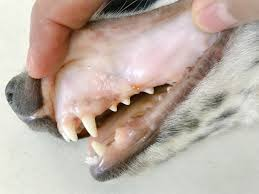53. The most common intoxications in small animal practice (kumarins, ethylene glycol, drugs, biotoxins)
1/47
There's no tags or description
Looks like no tags are added yet.
Name | Mastery | Learn | Test | Matching | Spaced |
|---|
No study sessions yet.
48 Terms
What are examples of coumarins?
Warfarin & Superwarfarin, Brodifacoum
What is the effect of coumarins on the body?
Cause reduction in vitamin K-dependent clotting factors (II, VII, IX, X)
They prevent prothrombin production in the liver, prolong clotting time, and damage capillaries, causing massive internal bleeding

Reduced prothrombin time, prolonged clotting (Normal = Dog: 90-120 sec; Cat: 60-80 sec) & bleeding times.
However, treatment is usually started immediately based on suspicion of rodenticide ingestion
Administration of transfusions (clotting factors). Plasma w/ clotting factor, blood transfusion.
Synthetic vitamin K or K1
Warfarin: 1 mg/kg vitamin K1
Brodifacoum: 10 mg/kg vitamin K1
Emesis: apomorphine (dog), xylazine (cat)
Stage 1 (within 30 minutes)
Stage 2 (12-24 hours after ingestion)
Stage 3 (36-72 hours after ingestion)
Urine analysis (crystalluria with blood, pus and casts)
Ultrasound (renal hyperechogenicity due to calcium oxalate crystals)
Measuring blood ethylene glycol, creatinine and BUN concentration
5% IV or 40% PO ethanol solution or fomepizole (an alcohol dehydrogenase inhibitor) and aggressive fluid therapy
What are examples of drugs causing intoxications?
ACE inhibitors (anti-hypertensive drugs)
Anti-depressive drugs
Marihuana
Paracetamol
Gastric lavage, activated charcoal, and the antidote N-acetylcysteine
Snake venom
Wasp stings
Poisonous plants
Toxins from certain foods
Blue-green algae
What is the effect of snake venom?
Viperidae venom → haemolysis
What are examples of foods which may cause intoxications?
Chocolate
Grapes and raisins
Onion and garlic
Black tea and coffee
Theobromine, which is slowly processed by dogs, leading to build-up and causing muscle tremors, seizures, irregular heartbeat, internal bleeding, or heart attack
What are the clinical signs of intoxications with onion and garlic?
Vomiting, brown urine, lethargy
Caffeine (a purine alkaloid) is biotransformed into cytotoxic pyrroles, especially affecting liver cell nuclei, leading to liver failure
What other coumarins exist other than warfarin and super warfarin?
Brodifacoum
How long after treatment of ethylene glycol poisoning should euthanasia take place if there is no improvement?
24 hours
What is the dose of vitamin K1?
Warfarin: 1 mg/kg
Brodifacoum: 10 mg/kg